Facing the Freeze Damage
I keep thinking that it will slow down – all the questions about frozen plants. But that freight train just keeps tumbling through.
Tuesday I posted a photo on Facebook (same one I used here last week) showing Indian hawthorns that had been lost in West McKinney to the cold. I explained that I had fielded that same question 10 or 12 times the day before.
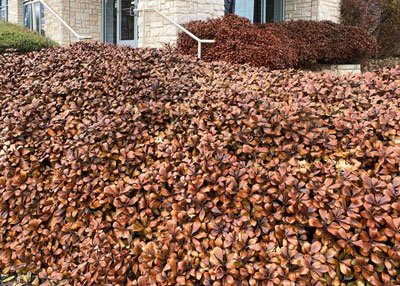
That FB post has been read by 400,000 as this e-gardens goes out. 70,000 Engagements. 1,200 of them have posted Comments, and 1,700 have “Shared” the post. That’s a lotta interest.
So, from that, I’ve pulled photos from posts folks have made on my page in the past three days. These address other plants, most of which I did not cover in a similar report last week here. (Take a look at it. It might be of help.) Sooner or later, I think I’m destined to cover every plant species. 🙂
Photos from Facebook…
I’m “borrowing” these photographs that folks have posted on my Facebook page as they’ve asked if I thought these plants had any chance of surviving. I’m going to give you a quick summary of my comments.
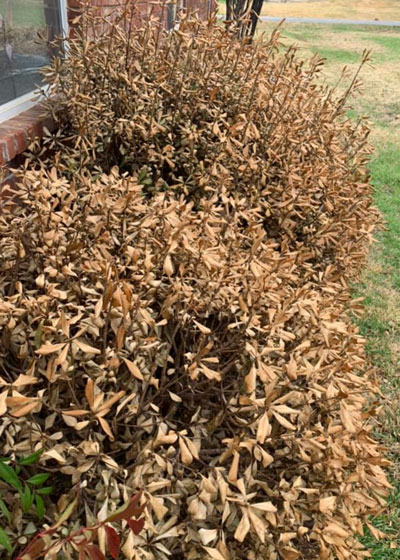
• Pittosporum (photo, I believe, from the College Station area). Normally these plants do very well in the southern half of Texas, but the February cold spell nabbed them clear to Houston and other parts of South Texas. When pittosporums freeze, they do not put out new growth from their roots like other species will do. Time to replace.
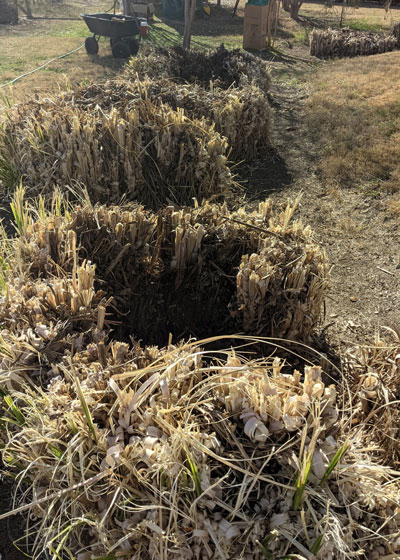
• Pampasgrass (photo, I believe, from DFW area). It’s supposed to be an evergreen grass, but in the northern half of Texas its leaves freeze-burn badly every few winters. But rarely like this. This gentleman fought the battle and trimmed his plants. Now he’s going to try planting a new plant into the bare centers where needed rather than digging and removing/relocating. I told him I wasn’t sure how that would work, but I asked him to report back.

• Gardenia (photo in DFW area). This plant is history. My wife and I live in a rural area northeast of Dallas, and gardenias have freeze-broken my heart for the last time. I guess if I covered them tightly with frost cloth maybe I could coax them through, but I’m just not wanting another plant to baby. They belong in acidic soils and warmer surroundings than I can provide.
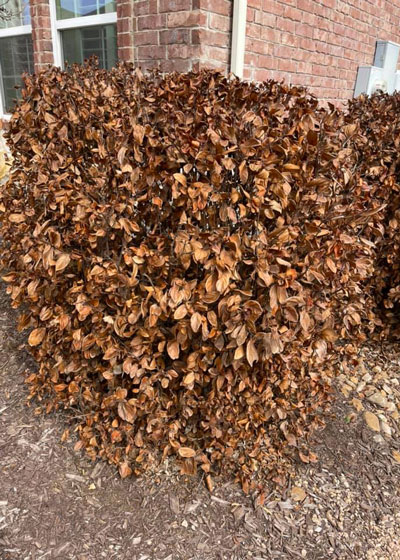
• Sandankwa viburnum (San Antonio area). We don’t grow this, or sweet viburnum or Spring Bouquet viburnums very long in North Central Texas, but in Bexar County they are long-term plants for those who want something unusual. But not this year. This plant is compostable.
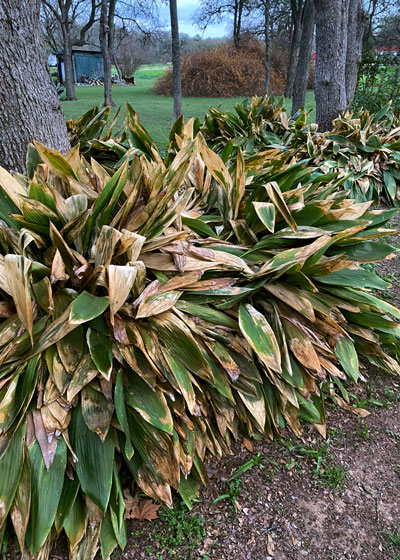
• Cast iron plant/Aspidistra (Austin area). The cold really cooked these leaves (and the primrose jasmine or whatever that mounding plant in the background is). These leaves all need to be cut and removed, and it needs to be done soon, before new leaves start to shoot up from the ground. This will be a tough job. A heavy-duty, gasoline-powered trimmer will be the best bet. I cover my cast iron plantings with frost cloth when it gets cold, and the plants look great right now, even though we dropped to -4F.
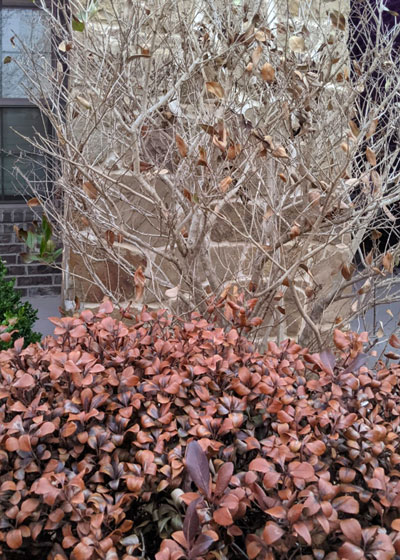
• Waxleaf ligustrum (not sure where photo was taken, but they look the same over most of the state). I’ve been doing this kind of work for 50 years. That’s after growing up in Texas with waxleafs all around me. I’ve seen this total kill from cold once in the 70s, again twice in the 80s, and now again in 2021. For a plant that we want to use in massed plantings, it’s just not a deal. This plant and the Indian hawthorn in front of it are both toast.

• Waxleaf ligustrum screen (again, unsure of location where photo was taken). These folks will need to start their privacy screen all over again. Willowleaf holly would make the very best screen of comparable size. Oakland holly is slower growing, but slightly more compact. Both grow to be 8 ft. tall.
